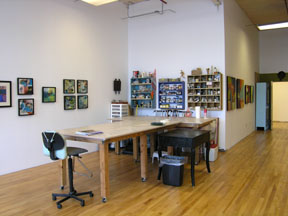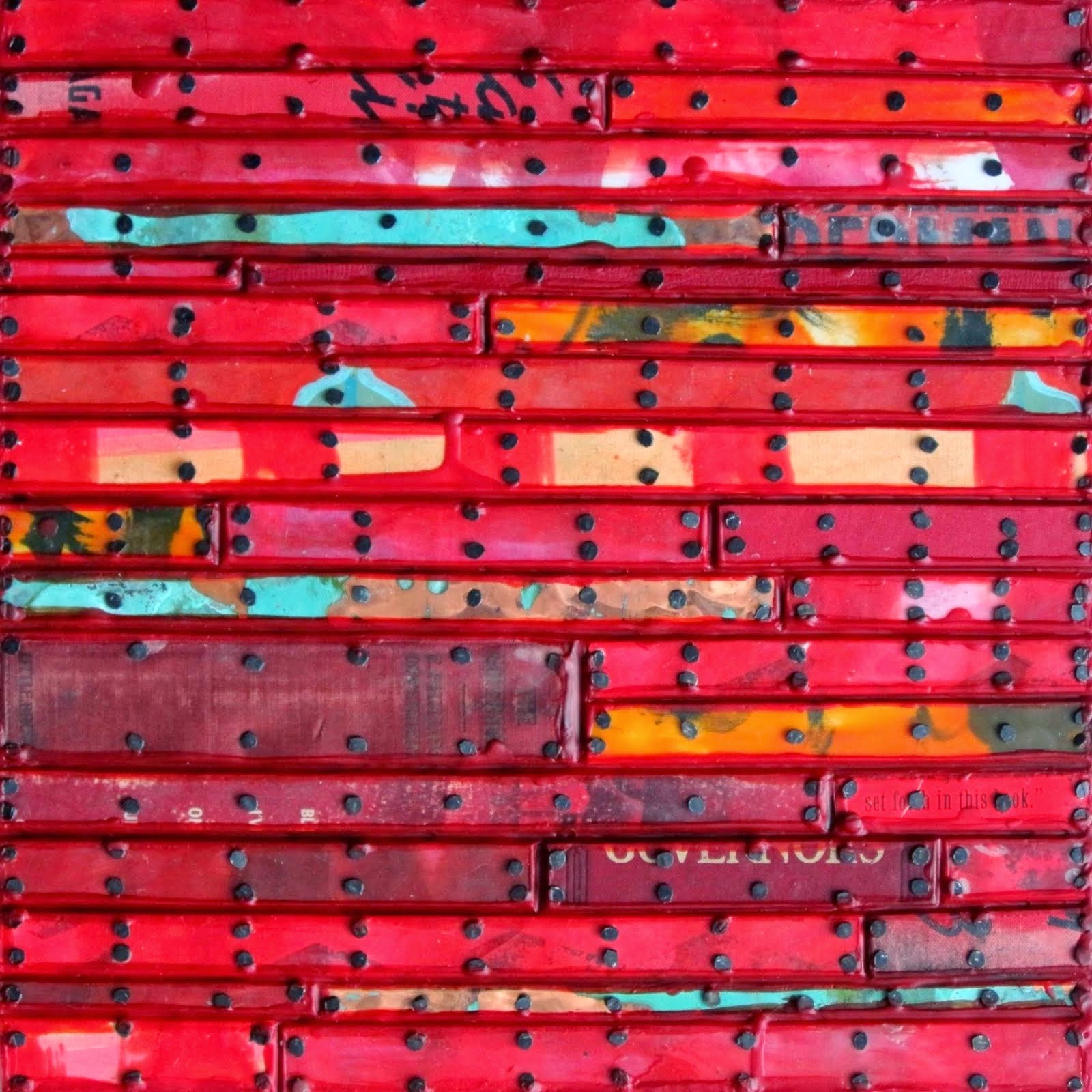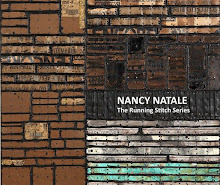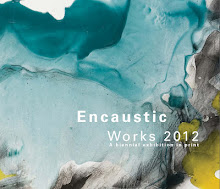(The materials used in this work are discarded plastic wrappings from liquor bottles along with thin copper wire. If you use the search feature in my blog for Anatsui, you will find many previous posts about him with a lot of information, but here is one about his show at Wellesley College that covers a lot of ground.)
 |
| Installation view from the Jack Shainman Gallery website |
Anatsui's most recent show, Pot of Wisdom, ran from December 14, 2012 to January 19, 2013, and I was lucky enough to catch it on the last day along with artist friends Binnie Birstein, Tamar Zinn, and Debra Ramsay.
I was struck by the way Anatsui's work has evolved and by the experimental nature of the works in this show. It seemed to me that he was trying many different approaches and solutions but using the same materials. I found the variety really fascinating. In general, the works have more sculptural form and the areas of various patterns were very distinct because of the color changes. This made the works look more like sculpture mounted on the wall than metallic tapestries to my eye. Of course, the wrinkles and irregular arrangements that Anatsui prefers are still present in most of them and this adds still more form and presence.
 |
| To give you an idea of scale on the piece in the first photo, here is a small poster I got from the gallery that shows the work with a person standing in front of it. |
 |
| Here's a shot that shows the dimension in the work as it hangs on the wall. |
I think I'm also seeing new color in the pale blues he is using. Of course, this is not really pale blue at all - it's a darker blue print (label) with lots of white. Following are two close-ups from this piece. (you can click to enlarge)
Next is a shot of something also quite different for this type of work from Anatsui - a free-standing piece. (I believe that this one is "Pot of Wisdom.")
 |
| This is a gallery installation shot. |
And here is my close-up shot of the "pot" itself:
This shot demonstrates the versatility in the way the wrappings are folded, wired and assembled into many combinations that can either look like solid woven textiles or open webbing.
Next is a gallery shot of three very different pieces at once.
 |
| You can see how strikingly different they are from each other. |
 |
| Photo of me by Debra Ramsay |
In the piece behind me, note the lines of green. That is an innovation that I do not recall seeing before.
Following is a close-up of the piece so you can see how the lines were formed. Also note that there are deliberate holes or voids in the work that are edged in colors.
You will see that I am not giving you titles and sizes. I did not find this information easy to come by. There were no wall labels and I did not see a price list when I went to the desk, but then, neither did I ask.
 |
| This net-like piece looks like "Pot of Wisdom" flattened and hung on the wall. |
I first saw this openwork type of netting in a couple of pieces in Anatsui's show at Wellesley College although I didn't include photos of them in the post. This work has such a different feeling than the tapestry-type works. It looks like a fishing net hung on the wall, very light and airy.
Next are two pieces that I really loved.
 |
| This is a gallery installation shot. |
First the blue piece with that striking black shape.
What looks like a pale blue is made from the same dark blue with white labels I showed on the first piece above. Note that black line projected above the top of the piece. Is it pointing to something? I'm reminded of a pointing finger.
And there is that little red area on the left side toward the bottom. It really calls out the red pieces within the black shape.
Then there is the patchwork-type piece.
I thought first of a map or then of a sampler of various techniques and materials
The next piece is my favorite of all. It looks like it's been splashed and dipped in paint or ink along the side. How could this be possibly be done with bottle caps and wrappings?
Showing you the overall piece and then the scale above. Now for the closeups:
In the bottom shot, if you enlarge the image, you can really see how the pieces are folded, cut and otherwise manipulated to make them do what Anatsui wants to do. This is really masterful.
At long last, here is the final piece.
 |
| The gallery shot. |
 |
| My shot. |
This piece is probably the most like what we have seen from Anatsui in the past, however, there are some differences: first, those strips at the top. Being an aficionado of Project Runway, I was seeing them as straps as though the piece could be worn as a garment, although it would wrap one giant of a body. But some of the African ceremonial garments are big pieces of textile like this.
 |
| Here are the strips or straps at the top. |
Finally, there are several parts at the bottom where pieces with very different colors and shapes are included. They have a real look of patterning as though they are printed cloth.
So there you have it. You can see how this show demonstrated Anatsui's versatility and love of change and experimentation. We don't know when the work was made, but I'm thinking that he retired from teaching last year. Maybe that gave him more time and/or ability to concentrate on his work and plumb the material for all it was worth. We will just have to see how the work develops for the next show.
By the way, if you are in New York between now and August, you can see a large show of Anatsui's work at the Brooklyn Museum: Gravity and Grace: Monumental Works by El Anatsui. Here's the link. It looks dramatic and extensive. Here's a link to a New York Times slide show of works in the Brooklyn Museum show.









































